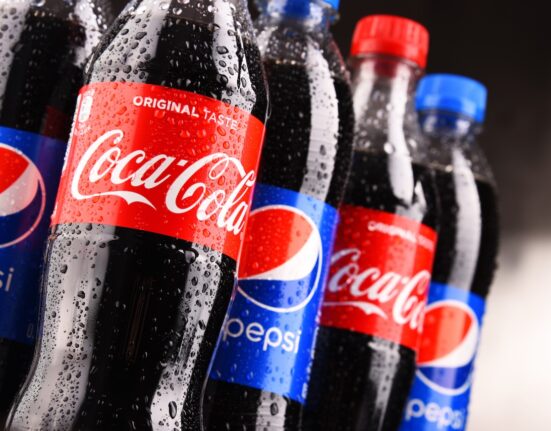For a century, those operating seaports lining the Delaware River have expanded imported fruit trade. In the last decade, fresh produce growth has annually exceeded 12 percent, and all indications are for accelerating this trade.
A positive outlook is justified for numerous reasons. This geography is ideal for reaching a huge part of the continent’s population. Experienced traders and service providers have professionally developed healthy relationships with relevant government agencies. Fruit industry entrepreneurs have applied past success to heavily invest for future expansion.
Despite highly-competitive positions, neighboring states Pennsylvania, Delaware and New Jersey all ponied up to deepen their long river channel to 45 feet. That work that is now being completed is opening the river’s ports to the largest ships serving the U.S. Eastern Seaboard.
In February 2022, Pennsylvania Governor Tom Wolf strongly affirmed his Commonwealth’s commitment to the Port of Philadelphia. Wolf announced an additional $246 million investment to continue port modernization efforts and improve regional economic stability. This builds upon the governor’s comprehensive $300 million Capital Investment Program at the Port of Philadelphia in 2016.
A substantial part of Pennsylvania’s investments will further develop infrastructure at the Packer Avenue Marine Terminal (PAMT). Holt Logistics, based across the river in Gloucester City, NJ, manages PAMT in a lease agreement with the Port of Philadelphia. Among PAMT improvements will be new gantry cranes in the yard, which will enhance containerized food product movement. Also new, upon the nearby site of the old Philadelphia Regional Produce Market, is the recent construction of a 200,000 square-foot food distribution facility. This is now expanding with an additional 170,000 square feet of cooler space, says Leo Holt, president of Holt Logistics.
The Holts recently invested $50 million into their Gloucester Marine Fruit Terminal. Improvements involved a complete upgrade of their pier, two new container cranes, the acquisition of other equipment and a total rebuild of its warehouse. “These are exciting times,” says Holt.
A huge asset to build future fruit import business on the Delaware is construction of an entirely new, reefer container port, named Edgemoor. Construction is underway immediately upstream from the Port of Wilmington. GT USA Wilmington LLC operates the existing port and sees enough global fruit potential to invest about $500 million in Edgemoor.
Historic positioning
Peter Kopke, Sr., is likely the last actively working produce man who imported Chilean produce when it was discharged at New York Harbor in the 1960s. Working with his late father, William H. Kopke, Jr., Peter recalls it was common sense at the time to minimize inland freight costs and bring the fruit by sea to a population center. Nowadays, Peter Kopke, Sr., has long been president of the legendary fruit import company, Wm. H. Kopke Jr., Inc., based in Great Neck, NY.

Chilean fruit exports flourished following Chile’s 1973 coup d’état. Under Marxist reign of the previous president, Salvador Allende, agrarian reform subdivided sophisticated farms to be operated by thousands of subsistence farmers. Although the dictator Augusto Pinochet was fraught with flaws, his work with University of Chicago economists created a lasting free economy. Efficient, informed, large-scale agricultural practices returned. Chilean fruit export volumes blossomed with production. At the same time, Kopke and competing fruit importers sought to avoid New York’s “inefficiencies and unjustified costs.” They took their business to Philadelphia docks. North American imports of Chilean fruit have since focused there. Near the waterfront today, Kopke operates a 180,000 square foot repacking and cold distribution center to handle its own fruit.
In 2026, the Holt family will celebrate its centennial of port service on the Delaware River. Leo Holt jokes that his memory does not extend through his family’s entire port operations experience. But the corporation’s institutional memory and expertise are vivid. Holt’s first century rode ups and downs, ultimately creating a very powerful perishable food import position for Holt Logistics, as well as its Delaware River allies and competitors.
The river’s cumulative infrastructure strength includes new, top-of-the line lift cranes, an appropriately vast number of reefer container plugs and short drayage to hundreds of thousands of square feet of cold storage space. In place are veteran, motivated stevedores, and warehousemen. Long-established fumigation services work with a myriad of experienced government inspectors to expedite perishable movement off ships and into North America’s food distribution system. Long haul truckers, who bring domestically produced food and supplies to the populous Northeast, transport tens of thousands of tons of fresh fruit back into the hinterlands.
Infrastructure along the Delaware River “makes it so easy” to bring in international produce volumes, according to Frank Manfredi, Sr., president of Manfredi Cold Storage. The company over the last 50 years created vast cold storages in Kennett Square, PA. In the last year, Manfredi created a new and fast expanding cold storage in Pedricktown, NJ. “We are still getting calls for space,” says the executive.
Overwhelmed by imports
Kopke notes the Delaware Valley seaports had unprecedented challenges over the past two winter fruit seasons – especially with overwhelming volumes in the 2021-22 season. Port storage facilities were at maximum capacity, and normally-efficient fumigators were severely backed up. With late harvest periods, Peruvian volumes, which routinely arrive in December and January, docked in February and March, which he says is “when Chile was going at full speed.”
Kopke cites a litany of issues making a perfect storm of problems early this year. The jam was exacerbated by a substantial lack of fumigation space. Another key factor was West Coast port congestion. Anticipating delays, Peruvian shippers diverted volumes to the Delaware, instead of Pacific ports. This coming season, that unexpected volume will not likely arrive. “That will relieve pressure here,” he says. Still, Kopke says the new cooler space being constructed in the Delaware Valley is inadequate for upcoming demand.
Asked if this massive jam could happen again, Leo Holt of Holt Logistics responds: “It could, but other factors are helping. Many of the workforce issues that have plagued the supply chain since Covid have been at the source of picking, packing, origin transportation and at ports of entry throughout the world. It has been a universal issue in all hemispheres. The good news is that it is also subsiding. Therefore, the coming seasonal fruit surges into the United States should not be as affected.”
Holts adds, “Obviously if shippers determine to blast a market with massive volumes and have neither infrastructure nor firm programs contracted to take these volumes, then the supply chain will experience delays. Therefore, close coordination and cooperation is crucial to a successful flow.”

Is break bulk a solution?
To better manage fruit arrivals Kopke says “we need to move to break bulk ships.” The Chilean business started with break bulk service, which was reduced as container lines came in and offered lower freight rates. As competition decreased, container rates doubled and even tripled. Now, Kopke says, “We pay more and have no service.”
In addition to cost problems, given the bills of lading, container carriers “have no obligation to come here in a timely way,” Kopke notes. “How can you import when you don’t know when the fruit will arrive? The container lines don’t exhibit any regard for their customers. It’s not the way it was years ago, when there were relationships between importers and the shipping lines. Our needs are not considered.” He says, for example, that one Chilean fruit container ship embarked on Dec. 15, with arrival expected 15 days later. That ship docked on Feb. 4.
Kopke says that break bulk ships from Chile can be discharged and delivered for fumigation. “When the stuff is in containers, you never know when it will arrive or be fumigated.”
He notes that “efforts are being made to replace the containers because there was mistreatment by some of the container lines. That is not acceptable to the people who pay the freight. There have been many lawsuits made by the people who were affected last year. This is a very complicated story.”
Holt shares the view that for seasonal fruit a robust specialized fleet is welcome. “One should also note that someone has to pay for the party,” he says. “As the container markets have marginally cooled there has been an almost instant movement of some of the outlier cargoes back to containers. An equilibrium is needed. It’s above our paygrade to guess what that balance point should be.”
Holt says that SeaTrade and Cool Carriers have both announced new building programs. “The world in general – notably growers, shippers, all lines, and governments – should welcome and support additional capacities as there are many factors that are benefitted from having a robust reefer fleet,” he notes. “It is agile and can pivot quickly.”
In 2022, as ocean trade recovered from the Covid pandemic, there was a rise in break bulk cargo, Holt says. This is a trend away from the river’s move toward containerization for the past 20 years. Break bulk cargoes accommodate a flexible supply chain, says Holt. Argentine pears and lemons, as well as 17 break bulk vessels bearing South African citrus this year were among the leaders in break bulk cargo. Break bulk fruit juice from the Far East and Mediterranean were new this year to the Delaware River system. Reefer ships also bore European frozen foods and packaged products from the Far East. Holt does not see this development necessarily being a permanent trend, but it does reinforce the strength of break bulk carriers’ mantra: “fast, dedicated, direct.” In the shipping world, break bulk serves as a figurative “sea anchor in these difficult currents,” says Holt.
More storage on its way
Many cold storage companies along or near the Delaware River are expanding to handle oncoming greater volumes. Specifically, given the riverfront’s tight space early this year, Manfredi is gearing up to soon have more space available. As building costs skyrocketed through 2022, Manfredi “took a breath” from a growth binge that began in 2016. But now, going into the fall, moderating costs support a 2023 development phase.
Sean Mahoney is the director of marketing for PhilaPort; otherwise known as the Port of Philadelphia. Mahoney, with Dominic O’Brien, senior marketing manager, and others on the veteran PhilaPort staff, are integral to the river’s fruit import success.
Success breeds success, Mahoney notes. “The global fruit suppliers look at what’s happening in Philadelphia, and so they come here.” Of all Delaware Valley fruit imports in 2021, 41% came from South America, while 23% were from Central America. Thirteen percent from Oceania and 11% from Europe. All the river’s fruit imports in 2021 were worth $4.1 billion. Total food imports were valued at $6.6 billion.
The most recent figures show 2021 refrigerated cargoes on the Delaware River are up 21% at 4.9 million metric tons. Of this, 44% is bananas. Imported meat tallies 11%. Pineapples total 10%, and citrus 7%. Grapes and melons each total 4%. Twenty percent fit in the “other” category.
Mahoney points to 2021 PhilaPort figures, which show river import cargoes of 740,000 twenty-foot equivalent units (TEUs) in 2021. Of this, 36% was reefer trade. O’Brien notes that Philadelphia’s TEU number for 2020 was 641,000. “That’s a 16% growth rate for 2021. And the port didn’t fall off in 2020, unlike other ports.” Mahoney expects this number to rise to 800,000 for 2022. Many expect 1.2 to 1.3 million TEUs before long.
Reefer growth for PhilaPort operations shot up from 88,000 TEUs in 2012 to 268,000 in 2021. This is an average growth rate of 12%. Mahoney credits family-owned businesses for their critical role in building fruit businesses on the river. “These guys are expanding refrigeration capacity,” he says. Large, privately owned companies are also quickly adding space. “They are all expanding in the Philadelphia metro area,” he notes. He says finalization of a new cold storage adjacent to Packer Avenue Marine Terminal springs from “a perfect public-private investment project” with PhilaPort, “with the main partner being Holt Logistics.”
Philadelphia’s competitive advantages should permanently remain in place in the fresh fruit business. But fruit imports into North America are not exclusive to the Delaware River Valley, Kopke emphasizes. Given proximity to the enormous West Coast consumer population, seaports in Los Angeles and Long Beach are strong destinations for imported fruit cargo. He expects Houston and Miami to continue to receive lower volumes of Chilean fruit. “The fruit flows to the people. The concentration will be where it is now.”
In the future, Holt predicts: “We will continue to see the Northeast United States be the best target market for the folks who grow food.” Sending production close to the population center will keep the Philadelphia area in the bullseye of those shippers. The port community is taking nothing for granted with its highly aggressive development.
Going forward, a digital age workforce will uplift the port industry. Digital technology will apply to forklift operators, warehousemen, clerks, and many others. Holt’s Gloucester Marine Fruit Terminal is installing digital technology for truck drivers to start coordinating from several miles away from dock door assignments and pick-ups. Efficient terminal truck movement reduces the carbon footprint by literally avoiding fruitless idling.
Based on current patterns in distribution and consumer trends, “The next 100 years are just as bright, in terms of growth,” asserts Holt. Despite current challenges, U.S. history points toward forward, transformative change and growth. The seaport will enjoy the same future, suggests Holt.
PhilaPort’s O’Brien expects continued volume expansion from Chile, Peru, Brazil, and South Africa. There also is much growth on the horizon via new services from the Mediterranean and North African countries.
In the short-term, Delaware River Valley seaports and fresh fruit import volumes this fall, and winter look higher than last year’s all-time high for the category. The mid-term prospects for fruit imports are even better. In the long-term, fresh produce imports are going to grow tremendously, says PhilaPort’s Mahoney.
The riverfront’s caring and personal service never changed, Manfredi notes. But there has been tremendous change through an explosion of growth on the waterfront and its related infrastructure. Technological changes, including vast expansion of the Panama Canal and computerized refrigerated containers on ever-larger ships are critical players in the ongoing growth.
This area is serving the consumer appetite for fresh fruit, notes Kopke. For North American consumers, the Delaware River is set to continue to be the leading gateway for meeting increased demand.





